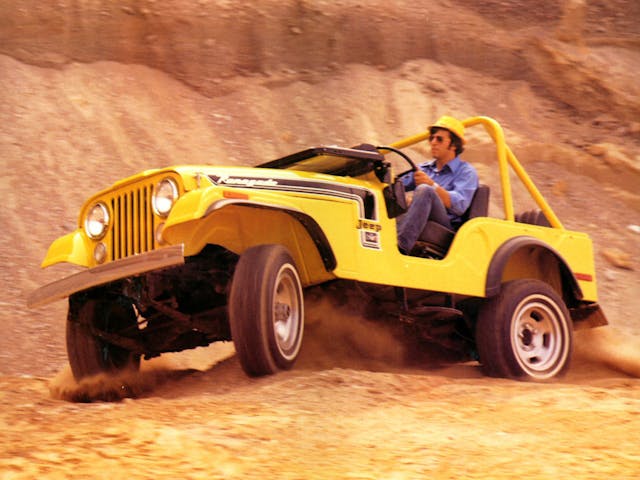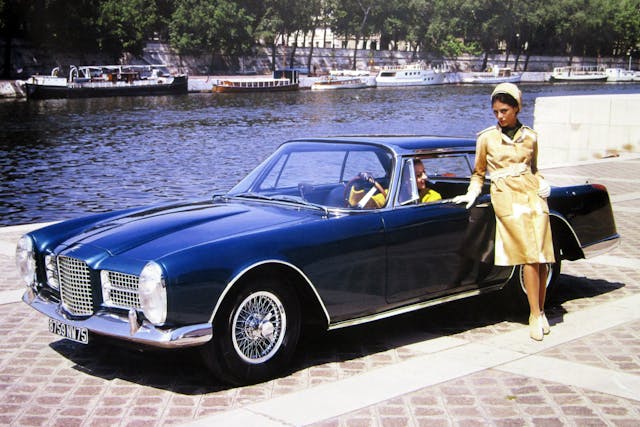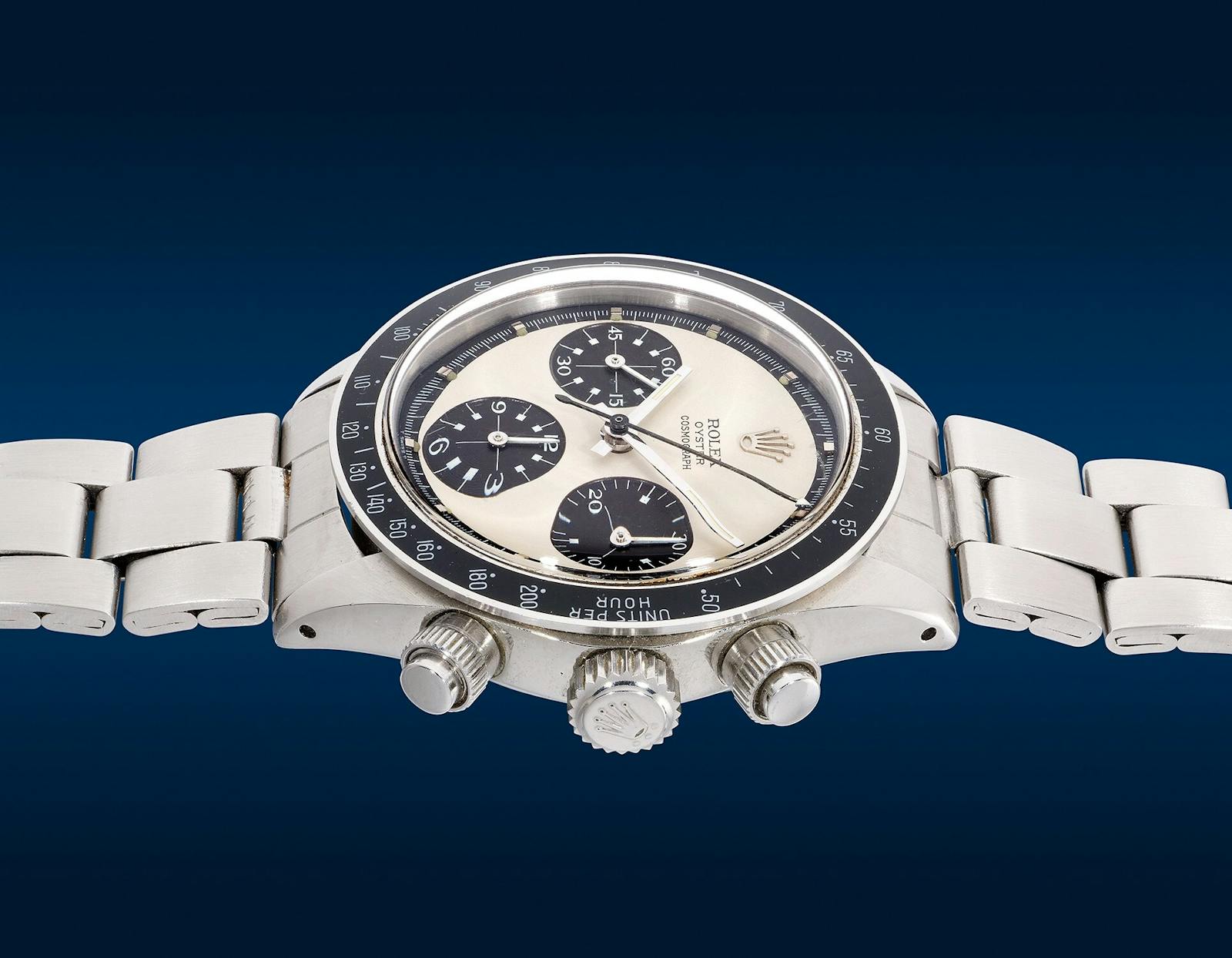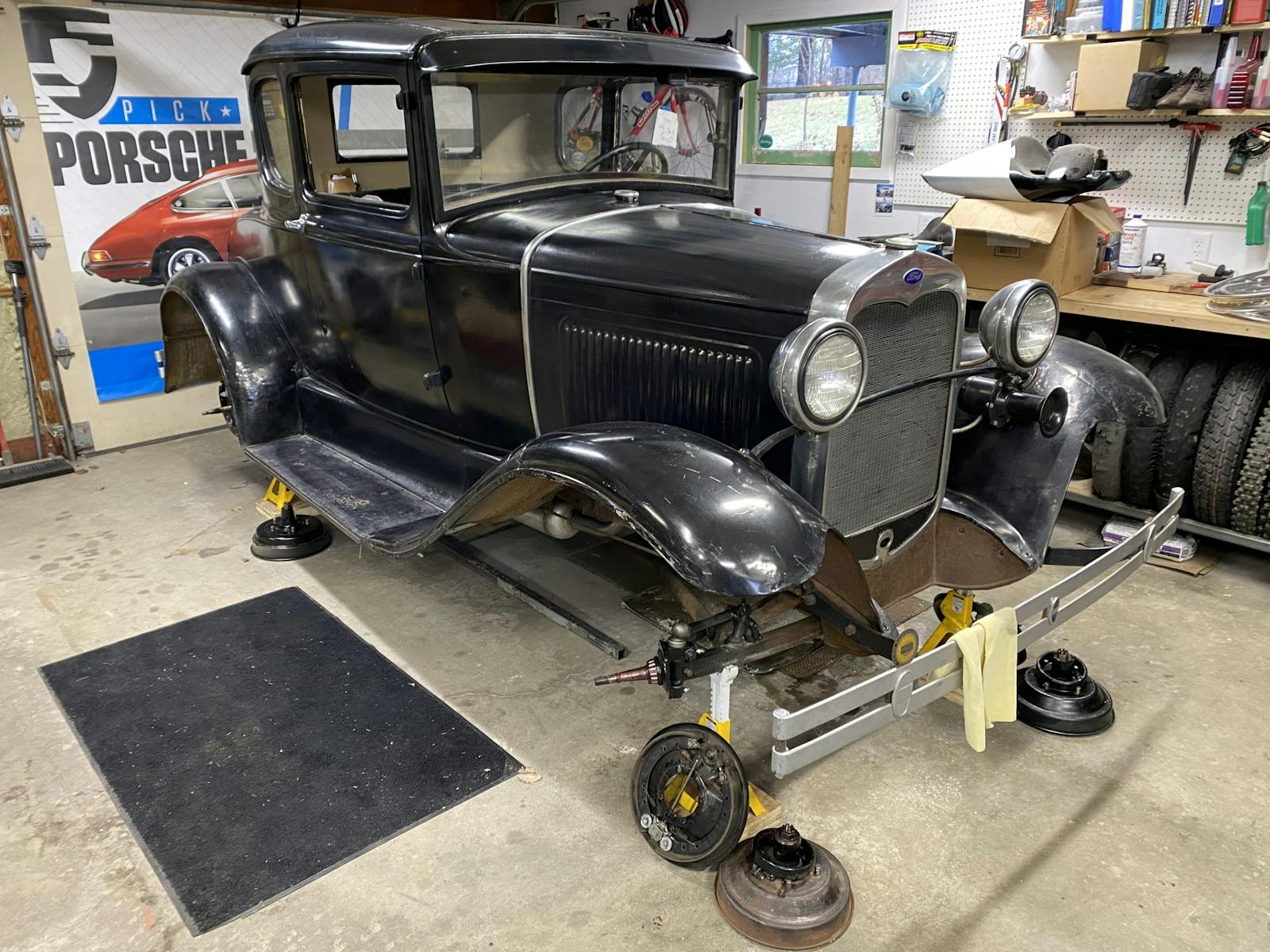5 collectible vehicles losing steam in 2023
The collector car market’s rapid expansion from summer 2020 through autumn 2022 was a rising tide that lifted almost all boats. When we noted which vehicles posted losses during that time, most value changes were isolated incidents; they didn’t reflect broader market forces. The first part of 2023, however, told a different story.
Results have been more mixed in the last few months than they have been in years. While a variety of vehicles are still gaining in value, an equally varied set of vehicles—including many mainstream favorites—are losing steam.
No, the sky isn’t falling, but the message is clear: The collector car market is evolving. While investment purposes shouldn’t be the primary reason to buy a car, there are some lessons to be gained by observing market trends and considering what they could mean for the future.
With that, let’s take a look at the five most notable value decreases from the latest Hagerty Price Guide.
1961–73 Volvo 1800 -25 percent

Volvo’s iconic 1800 is one of those models that nailed a design in a way few cars do. Its fantastic looks were penned by Pelle Petterson, son of Volvo consultant Helmer Petterson, while he studying under legendary designer Pietro Frua. The car flaunts an Italian flair while maintaining the sturdiness that Swedish cars embody. As if to prove that point, the record for the world’s highest-mileage car is held by an 1800 that clocked over three million miles.
Volvo 1800 values have historically held steady and affordable, with the occasional headline-grabbing sale spiking prices for a short time. Early in the pandemic, 1800s saw some real positive growth, but by the end of 2022 and into 2023, they began to change hands at pre-pandemic levels again. Moving forward, it is hard to say whether small downward adjustments will occur while the 1800 market finds its footing, but it is safe to say that 1800s won’t stay down forever.
Jeep CJ-5/CJ-7 -15 percent

The Jeep CJ-5 and CJ-7 seemed to mind time and corporate changes no more than pebbles on a trail. Between the two variants, they spanned over 30 years, and the CJ-5 survived through three management companies: Willys, Kaiser and AMC. Replacing the CJ-3 in 1955, the CJ-5 incorporated updates from military Jeeps after the Korean War. In 1976, the CJ-7’s introduction offered further options and comforts from the CJ-5. The two would continue to be produced side by side through the early ’80s, and the CJ-7 would continue through 1986.
Simply put, these Jeeps built the foundation for how we view the Jeep brand and the flagship Wrangler today.
While their appreciation has been gradual, time adds up: A CJ is now worth on average over three times more than it was in our founding (2006) Hagerty Price Guide. That result is undoubtedly spurred on by the enormous enthusiast following Jeeps have cultivated.
Despite that, CJ values have softened 15 percent since the beginning of this year. Much of the observed drop was related to weaker values of #3 (Good) condition examples, while values of pristine examples remained healthy. This points to the fact that buyers are less willing to drop money on driver-quality vehicles, a trend we’ve started observing across the broader market.
This decrease is nothing to panic over, however. The CJ is too big of a name in the truck market to erase all the value gains it made over the past couple decades, and typically, a gradual increase in value makes for a softer landing when the market changes direction.
1961–4 Facel Vega Facel II -14 percent

There’s a good chance that a large number of readers have never heard of a Facel Vega, so here’s a bit of context. The Paris, France–based company originally created stampings and bodywork for the French auto industry but became its own car-manufacturing marque in 1954. Specializing in luxury grand tourers, Facel Vega sourced big-displacement American V-8s to stuff under its beautiful bodywork. Its engine of choice? Chrysler’s 383. The company’s fortunes would be short-lived, however. It went into receivership in 1964, limiting the Facel II’s production to fewer than 200.
These cars rarely come up for sale, especially at public American auctions. After their values grew wildly in 2014, these cars have held steady, even while values of other six-figure automobiles dipped when the market cooled in 2015. That said, time may have caught up the Facel II. With offerings in Europe softer than before and with a collection of fair-grade cars on offer at Amelia Island 2023, it’s all too obvious that the market has softened, especially for any car not in top condition.
The important takeaway here is that buyers are becoming pickier than before: Nothing but the very best will do, and the rest must come at a price that makes sense. The Facel II’s trajectory appears to be yet another sign that reason has crept back into the market.
1964–7 Pontiac GTO -14 percent

Here it is, the muscle car that started it all. The product of John Z. DeLorean and his team of maverick engineers stuffing a large engine into a mid-size car and offering it to the public as a special-option package in 1964, the GTO’s stature in history is secure.
The resulting horsepower arms race lasted until 1972 (or later depending on which cars you choose to include as muscle cars) and is now fondly looked upon as one of the greatest eras in automobiling. Good looks, power, and significance have earned the 1964–7 GTO a place in the hearts of automotive enthusiasts, and while it may not be the most expensive or most powerful muscle car of all time, it is one you must experience to be called a true enthusiast of the segment.
Exactly a year ago, values for early GTOs exploded after a long stint of inactivity, gaining a total of 35 percent between April and July. As 2022 wound on and many of the good examples were snatched up, prices quickly began to settle back down. The 2023 January sales at Scottsdale and Kissimmee made clear that the market for GTOs has reassumed the level it held prior to January 2022. In contrast to the Jeeps above, the GOAT is a good example of a rapidly appreciating vehicle whose values are cooling as fast as they heated.
1990–6 Nissan 300ZX Twin Turbo -13 percent

As the market for Japanese sports cars began to heat up in the late 2010s, the Z32-series Nissan 300ZX experienced a surge of interest from collectors looking to enter the market. Though to a much lesser degree than its Toyota rival, the Supra, the Z also benefited from its cult status amongst kids who grew up in the ’90s and early 2000s. In twin-turbo V-6 form, the Z32 sports a potent 300 horsepower, and handling is assisted by Nissan’s HICAS four-wheel steering.
Following a prolonged hot streak, we’ve observed values of Z32 twin turbos decreasing—the recent 13 percent drop is the largest hit they’ve taken since peaking in the middle of 2022. One of the potential reasons behind the drop is that exceptional cars haven’t been hitting the market like they were before.
Another factor may be coming in shipping containers from Japan: With each passing year, more ’90s-era Skyline GT-Rs have become legal to import, and Nissan’s flagship is now in the U.S. in large quantities. For the same money as an excellent Z32 twin turbo, you can pick up a good R32- or R33-gen GT-R, and those cars carry more clout in JDM circles.
Regardless of the reason, values for this car are settling, not collapsing; don’t expect the Z32 300ZX to drop back to previously low prices.
***
Check out the Hagerty Media homepage so you don’t miss a single story, or better yet, bookmark it. To get our best stories delivered right to your inbox, subscribe to our newsletters.
Via Hagerty Insider



It’s only good news for those of us who buy a classic purely for the joy of owning and driving it, and aren’t well-heeled enough to get into at the top end. To see the prices for any classics stabilize should let more folks enjoy the experience.
I have a 63-1/2 Ford Galaxie 500, have owned for 36 years and can account for all the 44,000 miles I’ve driven it. Get out and enjoy your old car, no matter the make while you can, life is too short to have your classic sitting in the garage or wherever you keep it. Don’t be afraid to drive it. The value won’t matter to you after you’ve passed on.
Bblhed nailed it. You buy a car because it sings to you. What on earth does it matter if some scribe wanting to sell another officious article says it’s up or down this month, this year? If you’ve got the mad money to buy something for a given price, there are thousands of other years, makes, models at the same price range.
In short, it doesn’t matter. Three things have decimated this hobby: The Pebble Beach Janitorial d’Non-Elegance mentality, which has nothing to do with the original concours d’elegances in Europe from the ’20s into the ’50s, at which cars were judged solely on line, form, presence, often with a bit of mud still in their tire treads from having been driven there the night before. Of the three recent Best of Shows at Bauble Beach, two were billionaires, one from China, the other’s net worth half a billion.
Lauding a handful of marques far above their reality, ie Duesenberg, Ferrari, Bugatti, by those who’ve never crawled under one, studied one, know anything about the automotive business/field of that era, having no perspective, let alone even riding in or driving one.
The idea of automobiles as “investments,” car flipping as some Joe Sixpak route to wealth.
We get it. Hagerty is an insurance company and needs to determine stated value. Let them do this without the breathless articles. They sound like eager young stockbrokers “churning” an account. Hagerty occasionally runs interesting articles about the cars themselves. Let’s encourage them to do that.
Meanwhile, everything out of Kelley Blue Book is not a “classic.” Let’s retire this overwrought word. It’s lazy, sloppy writing. Many are just nice cars, interesting cars; vintage, old, used bolides. So be it. If you like it, so will someone else when it’s time to sell.
I’m just ready for the Old Muscle Cars to get to a price that regular people can enjoy and take care of them.
Even when you find one that is somewhat reasonable, you have to finance it at 10 percent down and insure the thing as a classic and forced to only drive it in a limited way or you pay a large amount of insurance so you can use it as you wish. This is all a bunch of crap. Yo should be able to buy the car and drive use it as you wish, without being penalized for driving a classic.
I must say, the only one of the cars listed that I would give a second look is the GTO group. Jeeps and Volvos are of no interest to me and I wouldn’t consider most to be collectable.
Maybe now average people who actually appreciate these cars will now be able to afford them instead of them sitting in some investors garage. On May 17th. this year I will have my 400 Firebird 50 years, if the value dropped to zero it would not matter to me as long as I enjoy the car as I always have. And one other thing, the picture of the Jeep with “whitewall`s” should frighten any true Jeep guy.
My friend was buying a business in a declining neighborhood. He knew a Facel was in the back lot, not pristine but close enough. Before the deal went down he saw it leaving on the hook of the pirate scrapper tow truck- obviously being stolen …. Never saw it again. Sold a hub cap from it to some guy in Holland. At least he got the Allard hulk….
Glad mine isn’t on the list. Everyone loves it
Any cars that no one sees is going to loose value eventually. What made these cars valuable was we all saw them cruising around when we were younger and wanted them. When we were able to afford them we bought them. Some were able to buy them at the time, some had to wait. How many 64-67 GTO’s do you see cruising around on Friday and Saturday night now? So how are the younger generations ever going to get as enthusiastic about these cars as we were. Quit hiding them and drive them!
Pardon if this posted twice, first time still prefaced “Your comment awaiting moderation.” Perhaps this is what happens when Hagerty software picks up anything not fawning over Bauble Beach, Duesenbergs, Ferraris:
Bblhed nailed it. You buy a car because it sings to you. What on earth does it matter if some scribe wanting to sell another officious article says it’s up or down this month, this year? If you’ve got the mad money to buy something for a given price, there are thousands of other years, makes, models at the same price range.
In short, it doesn’t matter. Three things have decimated this hobby: The Pebble Beach Janitorial d’Non-Elegance mentality, which has nothing to do with the original concours d’elegances in Europe from the ’20s into the ’50s, at which cars were judged solely on line, form, presence, often with a bit of mud still in their tire treads from having been driven there the night before. Of the three recent Best of Shows at Bauble Beach, two were billionaires, one from China, the other’s net worth half a billion.
Lauding a handful of marques far above their reality, ie Duesenberg, Ferrari, Bugatti, by those who’ve never crawled under one, studied one, know anything about the automotive business/field of that era, having no perspective, let alone even riding in or driving one.
The idea of automobiles as “investments,” car flipping as some Joe Sixpak route to wealth.
We get it. Hagerty is an insurance company and needs to determine stated value. Let them do this without the breathless articles. They sound like eager young stockbrokers “churning” an account. Hagerty occasionally runs interesting articles about the cars themselves. Let’s encourage them to do that.
Meanwhile, everything out of Kelley Blue Book is not a “classic.” Let’s retire this overwrought word. It’s lazy, sloppy writing. Many are just nice cars, interesting cars; vintage, old, used bolides. So be it. If you like it, so will someone else when it’s time to sell.
Why aren’t the 1983 mustang glx going up in value there getting harder to find in good condition
Simple,,,Real Estate ! Pays me $ and I can evan store my toys in some of it . Funny how it has tripled over past few years .
According to Hagerty, the value of my 1967 P1800 has decreased by 25%. I don’t know how much I have invested in it because halfway through the restoration process I started hiding the receipts from my spouse and now I can’t find them.